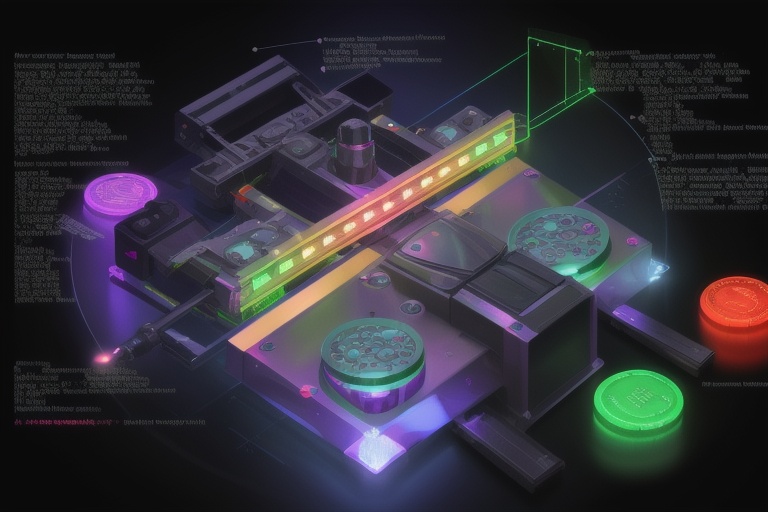The digital era we live in today is marked by its vast interconnectedness, which, while beneficial in many ways, has also given rise to an increase in cybercrime. Malicious actors, constantly in search of exploiting vulnerabilities, have lowered the barrier to entry into the world of cybercrime. This has been further assisted by new business models that cater to cybercriminals, offering subscription services, and starter kits to simplify their malicious endeavors.
The digital era we live in today is marked by its vast interconnectedness, which, while beneficial in many ways, has also given rise to an increase in cybercrime. Malicious actors, constantly in search of exploiting vulnerabilities, have lowered the barrier to entry into the world of cybercrime. This has been further assisted by new business models that cater to cybercriminals, offering subscription services, and starter kits to simplify their malicious endeavors.
Adding to this complexity is the role of large language models (LLMs) like ChatGPT, which have the potential to write code that could be used maliciously, presenting new challenges for maintaining cybersecurity.
With the stakes so high, business leaders are compelled to stay abreast of the latest developments in artificial intelligence (AI) and machine learning (ML), and their impact on the cybersecurity landscape. An impactful statistic from Forbes reveals that a whopping 76% of enterprises have earmarked AI and ML as priorities in their IT budgets. This trend is fueled by the need to analyze the vast amounts of data to detect and mitigate cyber threats—an increasingly arduous task due to the growing number of connected devices. By 2025, it's anticipated that these devices will generate an astonishing 79 zettabytes of data, making manual analysis no longer feasible for human capability alone.
Herein lies the imperative for AI as a cornerstone technology to aid in combating cybercrime. Despite its vast potential, we must also be cognizant of AI's potential risks if used nefariously. Concerns have been raised about the misuse of tools such as ChatGPT for social engineering purposes—creating phishing emails that are not only highly persuasive but also difficult to detect. Additionally, AI provides a stepping stone for novice hackers to amplify the effectiveness of their attacks, and the proliferation of malware and other cyber threats through AI-driven methods is a growing source of concern.
It's vital to recognize that while ChatGPT can generate code that may be functional to an extent, it tends to fall short of producing a complete solution. When it comes to coding, nothing short of perfection will suffice—fragmented code is ineffectual. Therefore, the indispensable element that ensures functionality is often the human touch, a refinement that ChatGPT and similar tools cannot fully replicate. This human intervention serves as a crucial checkpoint, containing the scope of any potential threats that might otherwise be sensationalized by media headlines.
Turning our focus to the positive implications, AI's role in strengthening cybersecurity measures should not be underestimated. The following key use cases illustrate how AI can actively contribute to enhancing our online security:
Automated Incident Response
AI's unique capacity to make inferences, recognize patterns, and execute proactive measures can transform cybersecurity efforts. By facilitating incident response, expediting threat hunting, and parsing through extensive data sets, AI can substantially improve our digital defense mechanisms. Advancements in computational power and scalability offer promising prospects where AI aids us in achieving greater levels of online security.
Continuous Monitoring
Defending against evolving cyber threats necessitates constant vigilance provided by continuous monitoring. AI-infused cybersecurity tools are adept at identifying and thwarting attacks in real-time, thereby automating parts of the incident response process. These tools are also instrumental in helping security experts pinpoint emerging threats and trends, allowing them to act preemptively.
Reducing False Positives
Human analysts often grapple with false positives, which impede threat detection efforts. AI alleviates this burden, thereby refining the precision and efficiency of threat detection and analysis. Through this, AI heightens the overall effectiveness of cybersecurity initiatives.
Strengthening Access Control
Machine learning algorithms can reinforce access control mechanisms by spotting anomalous behavioral patterns and flagging dubious login attempts. Prompt identification of possible security breaches enables organizations to react swiftly. AI-powered solutions also contribute to stronger password management, auto-detecting weak passwords and prompting users to create more robust ones.
Mitigating Insider Threats
Inside threats pose a considerable risk to any organization. AI solutions are skilled at scrutinizing user behavior to distinguish individuals involved in malevolent actions. By doing so, they help avert data breaches and other security incidents.
Acknowledging the potential risks associated with AI, it's paramount for business leaders to approach the application of AI in cybersecurity with an ethical and judicious mindset. A balanced, ethical approach to implementing AI-centric solutions is crucial. While there's a natural concern regarding the weaponization of AI, it's equally imperative to recognize AI's impressive capacity to augment cybersecurity measures and provide extensive benefits to society.
The ever-shifting cyber threat landscape requires a continuous commitment to understanding the most recent progress in AI and cybersecurity. Embracing AI and its vast possibilities allows organizations to mount an effective defense against cyber-attacks, paving the way for a more secure digital experience for all.
Information for this article was gathered from the following source.

